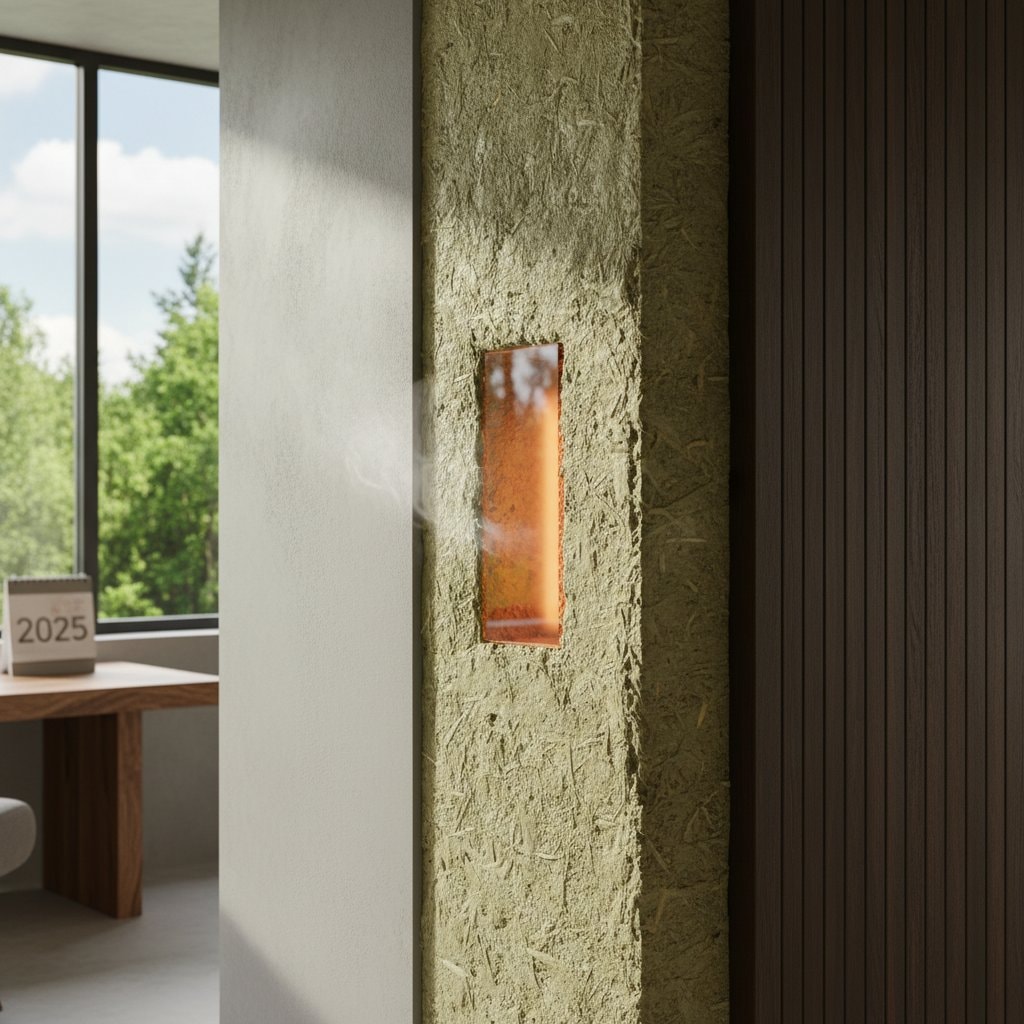Hempcrete Insulation: Fire-Safe Walls That Breathe
Hempcrete represents a breakthrough in sustainable building materials for modern homes. This innovative insulation combines the fibrous core of the hemp plant with lime-based binders to create walls that resist fire, regulate moisture, and sequester carbon. As homeowners prioritize eco-friendly options in 2025, hempcrete emerges as a practical choice for constructing resilient, energy-efficient structures.
Understanding Hempcrete Composition
Hempcrete derives from the inner hurd of the hemp stalk, mixed with lime and water to form a lightweight, porous material. Unlike traditional concrete, it requires no high-heat processing, which minimizes its environmental footprint during production. Builders cast this mixture into forms or spray it onto frameworks, allowing it to cure naturally over time.
The material's cellular structure traps air pockets that enhance thermal performance without relying on synthetic foams. This composition ensures hempcrete remains flexible yet durable, adapting to structural shifts in buildings over decades. Homeowners benefit from a product that integrates seamlessly with timber frames or retrofits into existing walls.
Fire Resistance in Action
Hempcrete excels in fire safety due to its non-combustible lime content, which chars rather than burns when exposed to flames. Tests demonstrate that hempcrete walls can withstand temperatures exceeding 1,000 degrees Celsius for hours, far surpassing many conventional insulations. This inherent resistance reduces the need for additional fire-retardant treatments, simplifying construction.
In residential settings, such walls contain fires effectively, limiting spread to adjacent areas. The material's low thermal conductivity prevents rapid heat transfer, protecting occupants and property. For regions prone to wildfires, hempcrete provides peace of mind alongside compliance with stringent building codes.
Breathability and Moisture Management
One of hempcrete's standout features is its vapor permeability, allowing walls to "breathe" by diffusing moisture without condensation buildup. This property prevents mold growth and maintains optimal indoor humidity levels, fostering healthier living environments. Traditional vapor barriers often trap moisture, leading to structural decay; hempcrete avoids this issue entirely.
The material absorbs excess humidity during damp periods and releases it when conditions dry out. This natural regulation supports consistent indoor air quality, reducing reliance on mechanical ventilation systems. Families in humid climates find that hempcrete walls contribute to allergy-free homes with fewer airborne irritants.
Environmental and Energy Benefits
Hempcrete sequesters carbon dioxide during its growth and curing phases, with each cubic meter locking away up to 100 kilograms of CO2. Hemp plants mature rapidly, requiring minimal water and no pesticides, making the raw material highly renewable. This closed-loop system contrasts sharply with petroleum-based insulations that release greenhouse gases over their lifecycle.
Energy savings materialize through superior insulation values, potentially cutting heating and cooling costs by 20 to 30 percent annually. The material's thermal mass stabilizes indoor temperatures, diminishing peak load on HVAC systems. Over a home's lifespan, these efficiencies translate to substantial reductions in carbon emissions and utility bills.
Practical Considerations for Installation
Initial costs for hempcrete range higher than fiberglass or foam alternatives, often 10 to 20 percent more per square foot due to specialized labor. However, incentives like green building rebates can offset this premium, and long-term durability minimizes maintenance expenses. Professional installers recommend starting with a site assessment to ensure compatibility with local climate and regulations.
The installation process involves preparing molds or frameworks, then pouring or spraying the wet mix directly. Curing takes two to four weeks, during which the structure gains strength without shrinking or cracking. Homeowners can explore DIY options for non-load-bearing partitions, but full-wall applications demand certified expertise for optimal performance.
Real-World Applications and Performance
In European projects, hempcrete has insulated passive houses that achieve near-zero energy use, demonstrating its viability in cold climates. North American builders increasingly adopt it for renovations, where it enhances older homes' efficiency without invasive alterations. Feedback from users highlights quieter interiors and stable temperatures year-round.
For new constructions, hempcrete pairs well with solar panels and rainwater systems, amplifying overall sustainability. Its acoustic properties dampen external noise, ideal for urban settings. As supply chains expand, availability improves, making it accessible for diverse architectural styles.
Building a Greener Future with Hempcrete
Choosing hempcrete aligns with forward-thinking home design that prioritizes safety, health, and planetary stewardship. This material not only meets 2025's demands for resilient building but exceeds them through proven performance in real homes. Consult local experts to integrate hempcrete into your next project and experience walls that protect, regulate, and sustain.










